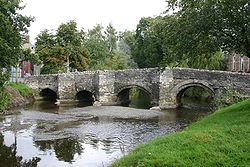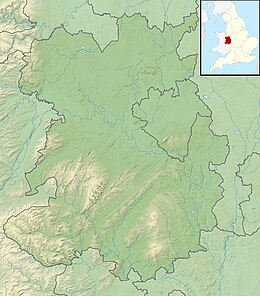An environmentally sensitive area (ESA) is a type of designation for an agricultural area which needs special protection because of its landscape, wildlife or historical value. The scheme was introduced in 1987. Originally it was administered by Ministry of Agriculture, Fisheries and Food, then the Rural Development Service for the United Kingdom Governments Department for Environment, Food and Rural Affairs, and currently Natural England following successive re-organisation of the departments. In 2005 the scheme was superseded by Environmental Stewardship and closed to new entrants. Existing agreements remain active until they expire, meaning the designation will remain active until 2014.

The River Teme rises in Mid Wales, south of Newtown, and flows southeast roughly forming the border between England and Wales for several miles through Knighton before entering England in the vicinity of Bucknell and continuing east to Ludlow in Shropshire. From there, it flows to the north of Tenbury Wells on the Shropshire/Worcestershire border on its way to join the River Severn south of Worcester. The whole of the River Teme was designated as an SSSI by English Nature in 1996.

The River Lugg rises near Llangynllo in Radnorshire, Wales. It flows through the border town of Presteigne and then through Herefordshire, England, where it meets its main tributary, the River Arrow, to the south of Leominster. It flows into the River Wye downstream of Hereford at Mordiford, around 63 miles (101 km) from its source. Its name comes from a Welsh root, and means "bright stream".

Clun is a town in south west Shropshire, England, and the Shropshire Hills Area of Outstanding Natural Beauty. The 2011 census recorded 680 people living in the town. Research by the Campaign for the Protection of Rural England suggests that Clun is one of the most tranquil locations in England.
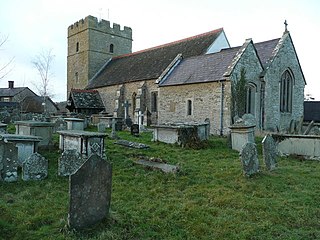
Clunbury is a village and civil parish in south Shropshire, England.

Clungunford is a village and civil parish in south Shropshire, England, located near the border with Herefordshire.

The Shropshire Hills National Landscape is a designated Area of Outstanding Natural Beauty (AONB) in Shropshire, England. It is located in the south of the county, extending to its border with Wales. Designated in 1958, the area encompasses 802 square kilometres (310 sq mi) of land primarily in south-west Shropshire, taking its name from the upland region of the Shropshire Hills. The A49 road and Welsh Marches Railway Line bisect the area north–south, passing through or near Shrewsbury, Church Stretton, Craven Arms and Ludlow.

The River Vyrnwy flows through northern Powys, Wales, and Shropshire, England. The name derives from Severn, the river of which it is a tributary.
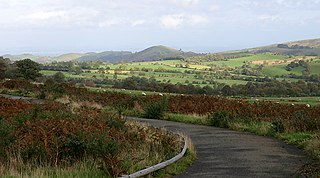
The Shropshire Hills are a dissected upland area and one of the natural regions of England. They lie wholly within the county of Shropshire and encompass several distinctive and well-known landmarks, such as the Long Mynd, Wenlock Edge, The Wrekin and the Clees.

Buckton and Coxall is a civil parish in north Herefordshire, England.

The River Unk is a small river in Shropshire, England that runs for 9.7 miles (15.6 km) before flowing into the River Clun.

The River Onny is a river in Shropshire, England. It is a major tributary of the River Teme.
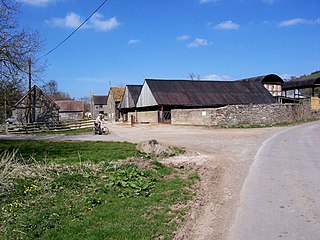
Bicton is a hamlet in southwest Shropshire, England, one mile north of Clun. The short River Unk passes through the hamlet. In previous centuries it was a township in the Clun division of the hundred of Clun.

Little Brampton is a hamlet in south Shropshire, England.

Broadward is a dispersed hamlet in south Shropshire, England, situated by the border with Herefordshire. It is in the civil parish of Clungunford, a village approximately 2 miles (3.2 km) to the north.
Heath is a dispersed hamlet in north Herefordshire, England.

The River Kemp is a tributary of the River Clun which flows through Shropshire, England.
Bicton Castle was a motte and bailey dating from the 11th or 12th century in the hamlet of Bicton, southwest Shropshire, England. Only the ditch and outer bank remain as other parts have been dug away during gravel extraction. The short River Unk runs past it.
